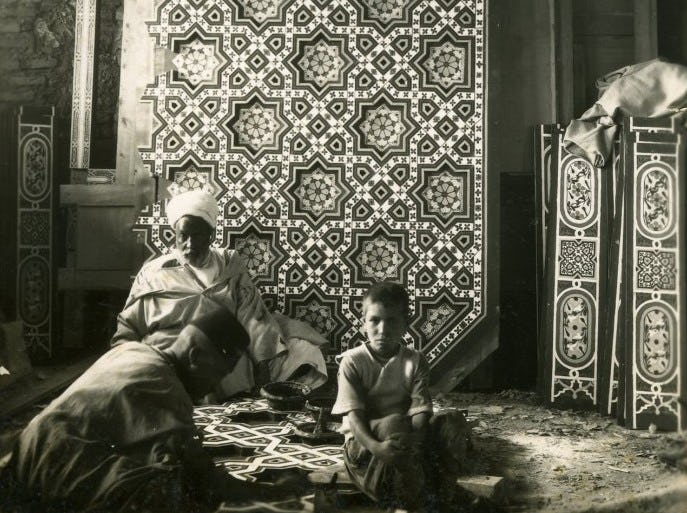Hanging Ceiling Lamp with Arabesque Motifs
Date19th-20th century
PeriodOttoman (Mamluk Revival)
MediumCopper alloy
DimensionsOverall: 33 x 5 1/2 x 18 1/2 in. (83.8 x 14 x 47cm)
ClassificationsMetalwork
Credit LineDoris Duke Foundation for Islamic Art
Object number54.6.4
DescriptionThis pierced copper lamp (one of four) is in the shape of a shallow basin pierced with tiny perforations forming geometric designs. The lamp is suspended by four ornate chains. The bottom of the lamp is pierced with a circular rosebud [?] design. A large inscription band encircles the body of the lamp, in praise of the Mamluk ruler, an-Nāṣir Muḥammad ibn Qalāwun who ruled Egypt in three reigns during the late 1200s and 1300s: “Sultan al-Malik al-Nasir, helper to God’s religion and assister of the world always.”
These lamps were not created during the reign of an-Nasir Muhammad, but rather during in the nineteenth and twentieth century when the style of the Mamluk period (1250–1517) reemerged, in part, due to a growing demand from European and American museums, collectors, and tourists. Artisans in Syria and Egypt met the demand, producing an array of objects in the “Mamluk revival” style, such as lamps, basins, and kursi (Qur’an stands). Some Mamluk revival objects produced in Cairo in the nineteenth and twentieth centuries are direct copies of original objects held by the Museum of Islamic art in Cairo.
On View
On viewCollections
19th-20th century
19th-20th century
19th-20th century
19th - 20th century
late 19th century
Late 19th century
Late 19th century
Late 19th century
19th - 20th century
19th - 20th century
19th - 20th century
19th - 20th century













